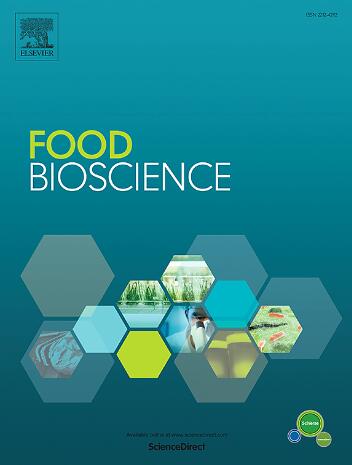功能性食品中2 ' -焦糖乳糖和嗜粘阿克曼氏菌的协同作用:酶降解机制及其在肠道健康中的治疗应用
IF 5.9
1区 农林科学
Q1 FOOD SCIENCE & TECHNOLOGY
引用次数: 0
摘要
muciniphila (a . muciniphila)是一种黏液降解细菌,是备受推崇的新一代益生菌,具有维持肠道内稳态、调节免疫、调节代谢等多种生理功能,已被广泛认为是代谢和炎症疾病的潜在治疗靶点。近年来的研究表明,嗜muciniphila与宿主之间的功能协同作用的核心机制在于其对2 ' -聚焦乳糖(2 ' - fl)的选择性利用,2 ' -聚焦乳糖是人乳寡糖(HMOs)中最丰富的成分。虽然嗜粘单胞杆菌和2 ' -FL在婴儿肠道营养和代谢健康中的重要性已经被认识到,但嗜粘单胞杆菌代谢2 ' -FL的分子机制以及这种相互作用的转化健康益处仍未得到充分研究。为了弥补这些空白,本文综合了目前对嗜粘液芽孢杆菌的空间分布、宿主-微生物相互作用和功能适应性的了解。我们进一步系统地研究了2 ' - fl的来源、生物合成途径和生物学特性,重点研究了糖苷水解酶家族(GHs)在2 ' - fl降解中的关键作用,包括GH29/95家族的α-1,2-聚焦酶和GH2/35家族的β-半乳糖苷酶。此外,我们探讨了由此产生的短链脂肪酸(SCFAs)如何促进微生物之间以及宿主和微生物群之间的串扰。基于这一综合视角,我们提出了设计针对性营养干预和人群特异性功能食品的新方向。本文章由计算机程序翻译,如有差异,请以英文原文为准。
Synergistic effects of 2′-fucosyllactose and Akkermansia muciniphila in functional foods: enzymatic degradation mechanisms and therapeutic applications for gut health
Akkermansia muciniphila (A. muciniphila), a mucin-degrading bacterium and a highly regarded next-generation probiotic, performs multiple physiological functions such as maintaining gut homeostasis, regulating immunity, and modulating metabolism, and has been widely recognized as a potential therapeutic target for metabolic and inflammatory disorders. In recent years, studies have revealed that the core mechanism underlying the functional synergy between A. muciniphila and the host lies in its selective utilization of 2′-fucosyllactose (2′-FL), the most abundant component of human milk oligosaccharides (HMOs). Although the importance of A. muciniphila and 2′-FL in infant gut nutrition and metabolic health has been recognized, the molecular mechanisms of 2′-FL metabolism by A. muciniphila and the translational health benefits of this interaction remain understudied. To bridge these gaps, this review synthesizes current knowledge on the spatial distribution, host-microbe interactions, and functional adaptability of A. muciniphila. We further systematically examine the sources, biosynthetic pathways, and biological properties of 2′-FL, with a focus on the pivotal roles of glycoside hydrolases families (GHs)—including α-1,2-fucosidases from the GH29/95 family and β-galactosidases from the GH2/35 family—in 2′-FL degradation. Additionally, we explore how the resultant short-chain fatty acids (SCFAs) facilitate crosstalk between microbes and between the host and microbiota. Building on this integrated perspective of A. muciniphila-2′-FL interplay, we propose novel directions for designing targeted nutritional interventions and population-specific functional foods.
求助全文
通过发布文献求助,成功后即可免费获取论文全文。
去求助
来源期刊

Food Bioscience
Biochemistry, Genetics and Molecular Biology-Biochemistry
CiteScore
6.40
自引率
5.80%
发文量
671
审稿时长
27 days
期刊介绍:
Food Bioscience is a peer-reviewed journal that aims to provide a forum for recent developments in the field of bio-related food research. The journal focuses on both fundamental and applied research worldwide, with special attention to ethnic and cultural aspects of food bioresearch.
 求助内容:
求助内容: 应助结果提醒方式:
应助结果提醒方式:


